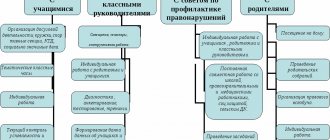Not all people use the concept of tolerance in their lives. What it is? These are norms of behavior accepted in a social environment, which are expressed in people’s tolerance for each other, religions, customs and feelings. We can say that the basis of tolerance is considered to be the right to express thoughts and personal freedom of every person. These are human feelings that are expressed in people’s positive attitude towards something, but not towards violations of moral and universal principles. This word has come into use not so long ago; let’s try to understand this concept in more detail.
Peony flower Tolerance includes such human qualities as:
- Compassion and tolerance;
- Forgiveness and mercy;
- Perception of one's neighbor with all his shortcomings;
- Respect for people's rights and freedoms;
- Desire to cooperate;
- Maintaining a spirit of partnership and parity among people.
In 1995, the UNESCO Declaration of Principles on Tolerance was adopted.
According to this document, tolerance is:
- Patience;
- Lack of aggression;
- Philosophical worldview and the ability to philosophically evaluate life positions and manifestations of the character of other people.
Depending on the area of manifestation, tolerance is divided into the following categories:
- Political;
- Pedagogical;
- Medical;
- Scientific;
- Administrative, etc.
Intolerance as a phenomenon
Any manifestations of intolerance are based on a feeling of superiority of one (one) individual over another (others). In a broad sense, intolerance implies negative, aggressive manifestations directed against someone whose lifestyle, views, personal or cultural characteristics cause disapproval or hostility. An intolerant person or group of individuals considers themselves better, higher, more intelligent than those against whom the arrows of their intolerance are directed.
In the historical aspect, the emergence of intolerance dates back to the most ancient times of the development of civilization. History knows many examples of intolerant attitudes towards other cultures, forms of religious worship, traditions, lifestyles and way of life. At the same time, there were many cases of extremely tolerant attitudes and even subsequent symbiosis of cultures that seemingly had nothing in common. Therefore, we can say that the development of tolerance and intolerance went hand in hand with the formation of human society.
Examples of tolerance from life
The most obvious manifestations of tolerance in life, as a rule, are associated with religion: you can meet a Christian who talks with a Muslim, and both of them are tolerant of each other, listen to each other’s position and opinion. Another example of tolerance can be a conversation between people of different political views. The important thing is that people do not try to impose their point of view , but rather have the strength to recognize that the other person may not share your political beliefs.
Often people are intolerant of the appearance of people who dress or look completely different from you. For example, you don’t like tattoos and as soon as you see a girl with a tattoo, your attitude towards her immediately deteriorates, or you don’t want to communicate with her at all.
It will be absolutely intolerant to express your position as the only correct one, to hint in every possible way that a person is wrong, that all his arguments seem stupid or insignificant to you. In this situation, you can safely call yourself an intolerant person.
Manifestations of intolerance
Manifestations of intolerance can be different:
- Verbal aggression: abuse, ridicule, reproach, manifestations of neglect, disgust; insult, obscene language.
- Physical aggression: beatings, torture, violence, murder.
- Psychological aggression: threats, intimidation, persecution, pressure.
- Territorial aggression and aggression at the state level: war, genocide, deportation, nationalism, fascism, repression.
- Aggression against manifestations of culture and religion, national symbols: desecration of monuments, graves, flags, objects of religious significance, etc.
This is only a small part of the manifestations of intolerance. Thus, intolerance is a serious threat to the life, health and well-being of people.
Ethnic and religious intolerance
Ethnic intolerance is one of the most common cases of intolerance.
This phenomenon is based on a feeling of superiority of one’s own ethnic group over another. In this case, one’s own ethnic group is perceived as dominant, preferential, and has more rights in relation to another group or groups.
Vivid manifestations of this type of intolerance are nationalism and Nazism.
The most widespread and terrible example of ethnic intolerance is the genocide of Jews in Nazi Germany. The feeling of superiority of Aryan origin over others instilled by the German government led to the mass extermination of not only Jews, but also Russians, Ukrainians, Poles and others. Concentration camps, gas chambers, repressions, deportations - all these components of the fascist regime became a manifestation of the German nation’s sense of superiority over “lower” ethnic groups.
Another example of intolerance on this basis is the genocide of Armenians by the Turks in 1915, which led to a huge number of casualties among the civilian population.
The worst thing about many cases of ethnic genocide is that it is often not just a social deviation among certain groups, but sanctioned and approved at the state level.
In modern Russia there are also manifestations of ethnic intolerance, mainly in relation to the so-called people of Caucasian nationality.
. . Issue 1 - 2.
IT IS HARD TO DISAGREE with the fact that some people are naturally more tolerant, others less so. Quite obviously, this quality manifests itself in problematic ethno-contact situations. Ethnic intolerance is a really significant form of manifestation of crisis transformations of ethnic identity. The basis of ethnic intolerance is increased sensitivity to people of other nationalities. It can be expressed in a wide range - from mild discomfort and irritation, which is not realized in any way in behavior, to various forms of discriminatory behavior up to genocide.The studies of T. Adorno and his colleagues have long become classic, confirming the existence of a special type of authoritarian personality predisposed to prejudice. Among its main characteristics are the following: conservatism, authoritarian submission (the need for a strong leader), authoritarian aggression (the need for an external object for release), anti-intraception (fear of expressing one’s own feelings and fear of loss of self-control), bias and stereotyping, power complex (inclination to share conventional values), destructiveness and cynicism, projectivity (projection of suppressed aggression outward) (Adomo et al., 1950).
A crisis social situation in a multiethnic society becomes a breeding ground for the development and manifestation of these characteristics, which turns people of this type into subjects of intolerance towards representatives of other ethnic groups. Therefore, in the context of interethnic relations, it seems important to us to continue the study of two paths of personality development: tolerant and intolerant. Continue because back in the middle of the 20th century, G. Allport built a typology of personality in the tolerance-intolerance continuum.
Based on the work of T. Adorno and his colleagues “The Authoritarian Personality”, the work of other psychologists, as well as his own research, he gave generalized characteristics of tolerant and intolerant personalities according to a number of parameters. Let us list them, considering only the pole of tolerance. So, a tolerant person is characterized by: (1) knowledge of himself (a tolerant person is well aware of his strengths and weaknesses and is not inclined to blame others for all troubles); (2) security (a feeling of safety and the belief that the threat can be dealt with); (3) responsibility (developed sense of responsibility, does not shift responsibility to others); (4) the need for certainty (a tolerant person does not divide the world into black and white, but recognizes diversity, is ready to listen to any point of view and feels less discomfort in a state of uncertainty); (5) self-orientation (more focused on personal independence, less on belonging to external institutions and authorities); (6) less commitment to order (less focused on order in general, including social order, less pedantic, polite); (7) the ability to empathize (socially sensitive and inclined to make more adequate judgments about people); (8) sense of humor (able to laugh not only at others, but also at oneself); (9) prefers freedom, democracy (social hierarchy does not matter much to him) (Allport, 1954).
Of course, dividing people into tolerant and intolerant is quite arbitrary. Extreme positions are rare. Every person in his life commits both tolerant and intolerant actions. Nevertheless, the tendency to behave tolerantly or intolerantly can become a stable personality trait, which allows us to make such distinctions.
Tolerance-intolerance is always a problem of the attitude of one ethnic group to another. That is why we put tolerance among the psychological characteristics that are especially important when studying intergroup interaction and transformations of ethnic identity. How does an intolerant personality manifest itself in interethnic relations? In search of an answer to this question, we tried in different situations of interethnic tension to determine the ratio of ethnically tolerant and intolerant individuals and to specify in the interethnic context some of the psychological differences identified between them.
Among our respondents were simply observers, direct participants, and victims of ethnic conflicts, as well as ideologists of national movements in the republics (those who are often defined as “designers” of relations between peoples). The following three groups were compared. The first is the titular and Russian population of three Russian republics with different levels of interethnic tension - Tatarstan, Sakha (Yakutia) and North Ossetia-Alania (over 2000 people). The second is forced Russian migrants and refugees from Chechnya (80 people). Forced migrants who left Chechnya in 1993–1994 went through interpersonal conflict situations on ethnic grounds. Refugees who escaped from Grozny in January 1995 experienced a crisis of inter-ethnic tension and found themselves victims of the most terrible form of organized violence - war. The third group of respondents are representatives of national movements - leaders and activists of “Styr Nykhas” (North Ossetia) and “Khostug Tyva” (Republic of Tuva) (70 people). In 1994, when we surveyed and tested them, these movements were the most active. By 2001, Styr Nykhas had gained an even stronger position in the republic. “Khostug Tyva”, on the contrary, practically ceased its activities in 1996.
The ratio of tolerant and intolerant individuals was determined on the basis of the methodological development “Types of Ethnic Identity”. When interviewing titular and Russian respondents in the republics, we used an abbreviated version of this methodological development as part of an ethnosociological survey. When interviewing forced migrants, refugees and activists of national movements, the “Types of Ethnic Identity” methodology was used in combination with other socio-psychological methods - the Bogardus scale, the Rosenzweig Picture Frustration Test, DTO, the Bass-Darkey Aggression Test, the methodological development “Ethnic Affiliation”:
Tolerant persons included those respondents whose ethnic identity can be characterized by the type of “norm” (natural preference for one’s own ethnocultural values, combined with a positive attitude towards other ethnic groups), or by the type of “norm” and “ethnic indifference” (indifference to interethnic problems, assessing them as insignificant) at the same time.
The group of intolerant people consisted of respondents with ethnic self-awareness of the “hyperidentity” type. In interethnic interaction, hyperethnicity manifests itself in various forms of ethnic intolerance: from irritation that arises as a reaction to the presence of members of other ethnic groups, to advocating a policy of limiting their capabilities, aggressive and violent actions against another group. This also included those respondents whose general interethnic disposition, along with hyperidentity, included either “norm” or “ethnic indifference,” or both.
Two additional groups among tolerant and intolerant individuals should be considered rather as potential personalities for these categories. They express both tolerant and intolerant attitudes. But their ratio was not the same. The predominance of one of the trends allowed us to draw a conditional boundary and divide all respondents into two categories. Persons whose tolerant attitudes predominated in ethnocontact situations were classified as “tolerant.” Accordingly, persons with a dominance of intolerant attitudes fell into the alternative category. Within each category, subgroups with their own characteristics and varying degrees of ethnic intolerance are distinguished. But in this case, we will focus mainly on a comparison in general of the two categories of persons we have identified.
The data in Tables 1 and 2 reflect the dependence of the level of tolerance both on the situation of interethnic tension and on the experience of participation in problematic situations of interethnic communication. The higher the ratio, the more tolerant people there are in the group. There are no surprises. As interethnic tension increases, the number of intolerant people among respondents increases. The more dramatic the respondents’ experience in situations of interethnic tension, the more ethnically intolerant there are among them. Among the representatives of ethnic groups in our study, there was no “cultural” predisposition to ethnic intolerance, as well as to aggressive behavior. This suggests that ethnic intolerance is to a large extent a situational characteristic, determined by current and past experience of interethnic interaction.
Table 1 The ratio of tolerant and intolerant people among residents of the Russian republics
| NORTH OSSETIA | TATARSTAN | SAKHA(YAKUTIA) | ||||
| Ossetians | Russians | Tatars | Russians | Sakha | Russians | |
| Ratio coefficient | 1,95 | 4,4 | 2,7 | 5,3 | 2,4 | 4,3 |
Table 2 The ratio of tolerant and intolerant people among activists of national movements and displaced persons
| "HOSTUG TUVA" | "STYR NYHAS" | FORCED DISPLACEMENTS (Grozny) | REFUGEES (Grozny) | |
| Tuvans | Ossetians | Russians | Russians | |
| Ratio coefficient | 1,0 | 1,8 | 1,2 | 0,7 |
One of the proofs of this thesis is the largest number of tolerant people among Russians in the republics (Table 1) and the smallest among Russian refugees from Grozny (Table 2). Among the latter, in comparison with other subgroups of intolerant respondents, “ethnon-nihilists” stand out - those who demonstrated a negative attitude towards their own ethnic group, the Russians. The crisis situation of inter-ethnic tension, which resulted in a war between Russia and Chechnya, gave rise to a surge of xenophobic reactions indiscriminately towards “friends” and “strangers” among its victims.
The level of intolerant people among internally displaced persons from Grozny is very high. They did not have time to find themselves in such a difficult situation as the refugees who fled Grozny in panic in 1995. But they have their own reasons for the growth of intolerance. This includes post-traumatic stress, which increases the difficulties of adaptation in a new environment, and the consequences of socio-psychological deprivation both before and after migration.
The largest number of intolerant people (50%) were among the members of the national movement “Khostug Tyva”, which was active in 1991–1993. And although a significant part of the members of this movement showed only tendencies of intolerance, nevertheless their number reflected the declared goals, objectives and anti-Russian sentiment of the movement. Its representatives raised the question in 1992 of fixing in the Constitution of the republic the right to secede from the Russian Federation. The immoderation of slogans and intolerance of the positions of members of the movement did not give it stability and did not find sufficient support in Tuvan society. This is one of the reasons for the disappearance of the Khostug Tyva movement from the political arena in 1995.
The intolerance of refugees and internally displaced persons finds its justification as a result of the difficult life situations in which they find themselves. But what about ordinary residents of the Russian republics, where the friendship of peoples has been glorified for many years?
It turns out that among them, most of them only indirect participants in situations of interethnic tension, there are many people with a dominance of intolerant attitudes. The largest number of such persons was found among Ossetians (33%), the smallest – among Russians of Tatarstan (15%). But among the Tatars, in relatively prosperous Tatarstan, the number of intolerant people is only slightly less (27%) than in the troubled North Ossetia-Alania.
In the early 1990s, when the atmosphere of violence in our society became more and more noticeable, publicists, writers, and scientists actively discussed the psychological factors determining the growth of intolerance and the constant search for the enemy. As a rule, it was emphasized that several generations of modern Russians, former Soviet citizens, were brought up in the spirit of Bolshevik intolerance, based on dislike for differences and intransigence in the fight against enemies. As one writer noted, in Soviet literature, national heroes, glorified even in books for preschoolers, were, as a rule, from among those who shed more blood than others (Vek XX i mir, 1990). To sum up the past, our man has accumulated a bunch of grievances and carries within himself a thirst for retribution. In different generations and in different cultures, retribution takes its own forms, but its psychological basis is the same - intolerance. In psychological terms, grievances are accumulators of irritation and hatred. The former Soviet man, in a sense, renounced his history. As a result of the repression of common memory from mass consciousness, combined with the inability to escape from oneself, he is in constant conflict. The feeling of danger not only does not leave the Russian, but also increases. The expectation of trouble mobilizes protective psychological mechanisms, among which aggression is not the least important. And all this against the background of mass depression, neuroses, frustrations, the malignant nature of which consists in a decrease in sympathy not only for the world around us, but also for oneself. This is the not very favorable psychological basis for the development of dialogue in the country and a fertile ground for the cultivation of intolerant individuals and their manifestation of their aggressive qualities.
In addition to general psychological factors, the growth of ethnically intolerant people may be the result of the political practice of ethnic nationalism, inherited by the republics from the former USSR (Tishkov, 1994), and a consequence of the natural generalization of negative emotions caused by a variety of reasons into the sphere of interethnic relations.
There are at least one and a half times fewer intolerant people in the republics among Russians than among the titular peoples. Here, of course, we can assume that tolerance, along with patience, is characteristic of Russians as a quality of national character (Kasyanova, 1995). But, apparently, still not to a greater extent than for other peoples in our study. For example, when assessing a life situation, Russians generally show no more patience - the most important realistic mechanism for solving critical life situations - than the titular peoples. In the modern ethnopolitical situation in the republics of Russia, ethnic tolerance of Russians is a forced defense mechanism. The objective situation puts them in conditions where, in order to adapt, they have to strive to understand the interests of the titular peoples.
What characteristics in the context of interethnic relations turned out to be characteristic of persons with a predominance of intolerant attitudes? Some of them were identified using various psychological methods: the Kuhn test, the Rosenzweig frustration test, the Attitude Diagnostic Test, the Bass-Darkey Aggression Test, the methodological development “Ethnic Affiliation”, etc. Respondents with pronounced hyperidentical attitudes have a hierarchical identity structure in which ethnicity is dominant. In the structure of the referent group identities of these individuals, ethnicity, as a rule, is either in first or second place. At the same time, among respondents with weak hyperidentical attitudes, ethnicity is not often found among self-identifications. This is typical even for leaders and activists of national movements. If among the life priorities of ethnically intolerant people the ethnic group represents the most important status category, then for tolerant people ethnicity is not always one of the main social dimensions.
Intolerant people have a higher need for ethnic association, and they react more actively to national problems. Most of them are convinced of the need to feel part of “their nation.” This suggests that for individuals with a predominance of intolerant attitudes, the desire to give their group a higher positive status and increase its prestige is largely motivated from within. Thus, in the context of interethnic relations, the “commitment to order” (G. Allport) and to conventional values (T. Adorno and others), characteristic of intolerant individuals, is refracted. In the zone of ethnic conflict - North Ossetia-Alania - the considered differences were expressed to a lesser extent, since such a factor as the growth of interethnic tension significantly influenced the increased importance of the need for ethnicity among tolerant individuals.
Deeper differences between the self-consciousness of tolerant and intolerant individuals can be seen when analyzing ethnic stereotypes. Let us present changes in the ethnic stereotype using data from a group of leaders and activists of the national movement “Styr Nykhas” (North Ossetia-Alania) (Table 3). A comparison of indicators obtained on the basis of the Diagnostic Attitude Test shows that in individuals with a predominance of intolerant attitudes, the imbalance between the positivity of the autostereotype and the negativity of heterostereotypes is significantly increased. This means that they often have an exaggerated desire for a positive ethnic identity, and they try to give it a higher status by strengthening positive differences in favor of their group. This is confirmed by other data.
Table 3 The ratio of tolerant and intolerant people among activists of national movements and displaced persons
| INTOLERANT | TOLERANT | |
| AUTOSTEREOTYPE (Ossetians) | 0,45 | 0,36 |
| HETEROSTEREOTYPES (Russians) | 0,22 | 0,30 |
| HETEROSTEREOTYPES (Ingush) | –0,22 | –0,12 |
Intolerant individuals evaluate their own ethnic group more positively and other ethnic groups less positively, compared to tolerant individuals. This means that positive characteristics undoubtedly dominate in their autostereotypes, and among the ideas that make up heterostereotypes, the number of negative characteristics is growing. Although positive characteristics undoubtedly dominate in the heterostereotype of Russians, even among intolerant members of the movement, negative assessments are still found in it twice as often as in the autostereotype. The assessments of the Ingush among tolerant and intolerant persons are even more different, although the situation of conflict tension sharply increased negativism among all members of the movement (Table 3). In addition, from Table 3 it follows that among people with a predominance of intolerant attitudes, firstly, the “affectivity” zone is expanded (from 0.45 to –0.22). This means that their perception of interethnic differences is carried out mainly on the basis mechanism of emotional inversion, they are characterized by a wide range of emotional assessments and higher emotional involvement in situations of interethnic tension. Secondly, intolerant people in the process of perception focus on differences, in this case, differences between ethnic groups. In other words, tolerant people perceive ethnic groups as closer, and the boundaries between them are more blurred, than intolerant people, for whom ethnic boundaries are sharply delineated.
What role do tolerant and intolerant people perform in “protecting” ethnic borders? The answer to this question can be found through the study of socio-cultural distance.
We compared the attitudes of tolerant and intolerant individuals using the modified Bogardus scale. The answers to the question of a person’s readiness to contact people of other nationalities as citizens of the republic, business partners, bosses, neighbors, friends and family members were considered. Two differences were obtained between tolerant and intolerant individuals.
Firstly, regardless of nationality, tolerant people distance themselves less at various levels from representatives of other ethnic groups. Secondly, the smooth increase in social distance from less significant to more significant types of contact among tolerant respondents contrasts with the sharp abrupt increase in social distance in the sphere of informal relationships among intolerant ones. For example, in the subgroup of tolerant Tatars, 80% of respondents are ready to accept a person of another nationality as a citizen of their republic, 72% as a neighbor, 35% as a spouse of their children, and 29% as a marriage partner. Among intolerant Tatars, no less than 80% of respondents are also ready to see their children as a citizen of their republic, 64% as a neighbor, but only 18% as their children’s spouses, and 17% as their own spouse. This pattern is also typical for other nations.
So, the data obtained show that ethnically intolerant individuals are a significant psychological factor that influences the representation and degree of spread of hyperethnic attitudes in group consciousness and therefore increases interethnic tension. The activity of such individuals contributes to the transformation of the group into a subject of intolerance in interethnic interaction. It should also be added that, whether we want it or not, ethnically intolerant individuals are the human material that reduces the permeability of ethnic boundaries at the informal level and, in this sense, contributes to the preservation of the ethnic group. They seem to have no doubt that ethnic borders must be protected, and they know from whom.
LITERATURE
- Kasyanova K. Russian national character. – M., 1995.
- Tishkov V.A. Interethnic relations in the Russian Federation: Report at the meeting of the Presidium of the Russian Academy of Sciences on February 23, 1993 - M., 1993,
- Adorno T..W., Frenkel–Brunswik E., Levinson DJ, San ford RN The authoritarian. Personality, NY, 1950.
- All port G. Nature of prejudice, – Cambridge, MA, 1954.
Religious intolerance
Very often, ethnic intolerance goes in combination with religious intolerance, since other nationalities usually have different religious characteristics. Hostility towards a nation gives rise to a negative attitude towards everything that represents it.
In the context of history, it was religious intolerance that became the cause of the massacres of peoples. In particular, when Christianity arose, representatives of this religion were subjected to severe persecution and punishment. Subsequently, when Christianity took a dominant position in European civilizations, representatives of other faiths were subjected to persecution and forced conversion.
Racial intolerance
Racial intolerance is a phenomenon characterized by a feeling of superiority of one's own race over another (others). This form of intolerance is called racism.
The most striking example of racism is the situation in the United States. It is known that representatives of the Negroid race were used as slaves for many years in the southern states of the country. The war of 1861-1865 put an end to the existence of slavery as a phenomenon in the United States. However, attitudes towards African Americans remained for a long time (and in some places still remain to this day) negative and full of prejudice. They were not allowed to hold certain positions; they were taken to the lowest paid and dirtiest jobs. There were frequent cases of discrimination in public places, transport, and so on.
In our time, these manifestations have been reduced to a minimum, but the echoes of those events can still be heard.
Sexual intolerance
This type of intolerance manifests itself more often in relation to the female gender.
Until the 20th century, women had virtually no public rights or social protection, being considered to some extent the property of their husbands. They did not have the right to work, vote, or engage in entrepreneurial activity. Those who dared to violate these prohibitions were subjected to ridicule, insults, and sometimes violence.
Women's rights movements and movements softened the situation and granted women a number of social rights. However, even now one can observe a negative trend in relation to providing women with jobs, career opportunities, etc.
Age intolerance
In Japan, there was a cruel custom: frail old people were taken to uninhabited areas (for example, in the mountains) and left to die.
Among other ethnic groups, there are similar examples when elderly people were either killed or abandoned to their fate.
In the modern world, things are more favorable. But, unfortunately, situations often arise when old people are abandoned without proper care and care, believing that they have lived their life. An example of age-based intolerance is not providing jobs to older people because it is believed that their cognitive processes are not as good as those of younger people and work flow may suffer.
It also happens the other way around: young people find it difficult to get a job due to lack of experience.
Another example of age-related intolerance is a disdainful attitude towards teenagers. It is believed that these people are immature, irrational, and incapable of making the right decisions. However, teenagers are often able to show much more common sense than adults.
Intolerance is a phenomenon that affects other social groups besides those listed above, for example, people with disabilities, representatives of certain professions, people with unusual hobbies, and so on.
Examples of tolerance
Each country has its own traditions and culture, and it is not always possible to sum everything up to a single denominator. What is normal in one country may seem unacceptable in another. There are examples of tolerance that clearly demonstrate these differences.
We are characterized by religious tolerance, examples of which we see every day. Catholics, Orthodox Christians, Buddhists, Islamists, Jews and atheists communicate calmly at congresses, without trying to convert the interlocutor to their faith. The times of religious wars are over and this is a huge achievement of humanity.
Another example is a vegan, a supporter of a healthy lifestyle and an ordinary person. It will be tolerant not to attack meat eaters, and not to accuse them of killing animals. Each person has his own path and it is impossible to force everyone to go his own way. You can explain your position, but nothing more. A tolerant person does not accept violence against himself and will not allow it towards another person.
Tolerance and tolerance are similar concepts, and yet they are somewhat different. Tolerance is an adaptive property of the psyche. A person can get used to (adapt) to irritating factors. This is an acquired property that, if desired, can be cultivated in oneself. Tolerance and patience depend more on the character of a person. We have different pain thresholds and everyone’s “cup of patience” is different. Someone can spend the entire day explaining his mistake to a perpetually distracted employee and not once cry out. Another’s patience will run out within 5 minutes, and he will go drink valerian. A tolerant person simply admits his powerlessness and moves on to other things.
Tolerant behavior is not always ideal, as it can provoke the opponent to violate personal boundaries. After all, a calm reaction to a stimulus can be interpreted as weakness. A tolerant person is one who can look at the world philosophically, perceiving it as it is. Someone who is tolerant will not try to reshape society to suit themselves, but will try to adapt to what irritates him.
How does tolerance affect people's relationships?
Tolerance in the modern world is necessary, since the process of globalization cannot be stopped. Gradually, politics, culture and economics are unified and the creation of a multicultural space is inevitable. Multiculturalism implies a tolerant attitude towards people, their interaction, without losing one’s own identity.
Tolerance in Europe and tolerance in Russia are somewhat different and some issues cannot yet be resolved.
In Europe, they are concerned about gender issues and transgender issues. To provide support to this segment of the population, the authorities decided to show tolerance by recommending that they eliminate from their vocabulary everything that clearly indicates a person’s gender. Mom, dad, husband, wife, it is recommended to replace all this with the words “parent” and “partner”. By the same principle, it is not recommended to use the phrase “breast milk”, since transgender people cannot breastfeed their child, although there are already such cases.
For the USA and Europe this is normal and this is a kind of victory over homophobia, but in Russia such initiatives are not supported. Sexual minorities are already treated with tolerance, but there are no plans to promote and provide special rights to the LGBT community.
What does it mean to be a tolerant person in Russia?
Quite a difficult question. After all, this is a huge multinational country in which many cultures, religions and customs have merged.
Most Russians were raised in the spirit of Russian Orthodox traditions, which place great emphasis on morality and ethics. Mercy and patience are virtues that every person should possess. The ability to show compassion and understanding towards one’s neighbor is the true strength of a person.
It is difficult to say how tolerance affects a person. After all, there are different situations in life when intolerant people try to violate your boundaries.
An intolerant person is someone who criticizes your appearance, character, social status and interferes without asking in your life. In such cases, we need to remember that tolerance does not mean silent submission. There is no need to turn the other cheek, but one should firmly limit the boundaries of permitted interference.
Critics of tolerance argue that promoting tolerance is a way of manipulating society. By cultivating indifference in people, one can achieve an ideally controlled society.
Tolerance of uncertainty
This term refers to a person’s ability to make the right decisions and calmly respond to new, unusual, uncertain or obscure situations. The inability to respond in this way is called intolerance of uncertainty.
In general, intolerance is a serious social problem that poses a threat to the well-being of not only individuals, but also entire nations. It is important to realize the relevance of this problem for its successful resolution.
What is tolerance?
In Russia, some people have a rather vague idea of what tolerance means. Tolerance is somewhere in the West, in Europe, but here everything is fine. However, we live in a society, almost every day we encounter troubles that come from other people. They cause our indignation and irritate us, which sometimes leads to serious conflicts. Sound familiar? Let's talk about tolerance.
Tolerance is, in simple words, the ability to show patience and respect for someone else's opinion, even if you do not share it.









